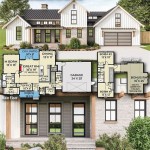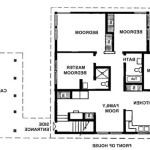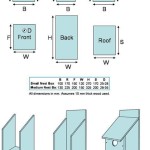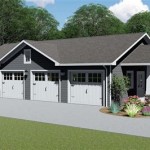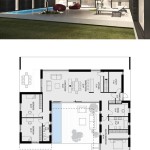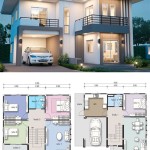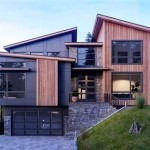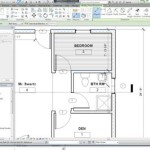Floor Plans With Porches: Enhancing Home Design and Lifestyle
Floor plans with porches represent a popular and enduring architectural choice, offering a blend of aesthetic appeal and functional outdoor living space. They cater to a variety of lifestyles and architectural preferences, providing a seamless transition between the interior and exterior environments. The inclusion of a porch in a floor plan adds value, extends living space, and provides opportunities for relaxation, entertainment, and connection with the surrounding environment.
The design and functionality of porches have evolved over time, reflecting changing societal norms and building technologies. Historically, porches served a crucial function as a semi-outdoor living area, providing a sheltered space for socializing and respite from the elements. Today, porches continue to offer these benefits while also incorporating modern design elements and materials, resulting in diverse and versatile outdoor living spaces.
When choosing a floor plan with a porch, consideration should be given to various factors, including the climate, the intended use of the porch, and the architectural style of the house. Proper planning and design can ensure that the porch becomes an integral and enjoyable part of the home.
Key Considerations When Selecting a Floor Plan With a Porch
Several key aspects should be carefully considered when selecting a floor plan that incorporates a porch. These include the size and orientation of the porch, the materials used in its construction, and its relationship to the interior living spaces. A well-designed porch should complement the overall architectural style of the house and provide a functional and aesthetically pleasing outdoor living area.
Size and Orientation: The size of the porch should be proportionate to the overall size of the house and should reflect the intended use of the space. A small front porch may be sufficient for a cozy seating area, while a larger back porch may be necessary for outdoor dining and entertaining. The orientation of the porch is also crucial, as it will affect the amount of sunlight and shade the porch receives throughout the day. In warmer climates, a porch facing north or east may be preferable to minimize sun exposure, while in cooler climates, a porch facing south or west may be desirable to maximize sunlight and warmth.
Materials: The materials used in the construction of the porch should be durable, weather-resistant, and aesthetically pleasing. Common materials include wood, composite decking, concrete, and stone. The choice of material will depend on the architectural style of the house, the desired level of maintenance, and the budget. Wood is a classic and versatile choice, but it requires regular maintenance to prevent rot and decay. Composite decking is a low-maintenance alternative that offers the look of wood without the upkeep. Concrete and stone are durable and long-lasting options that can add a touch of elegance to the porch.
Integration with Interior Spaces: A well-designed porch should seamlessly integrate with the interior living spaces. This can be achieved through the use of large windows, sliding glass doors, or French doors that connect the porch to the main living areas of the house. The porch can also be designed as an extension of the kitchen or dining room, creating an outdoor dining and entertaining space. Proper integration with the interior spaces will enhance the flow of the house and make the porch a more usable and enjoyable part of the home.
Types of Porches and Their Architectural Styles
Porches come in various shapes, sizes, and styles, each offering a unique aesthetic and functional appeal. The type of porch selected should complement the architectural style of the house and reflect the homeowner's personal preferences. Common types of porches include front porches, back porches, screened-in porches, and wraparound porches.
Front Porches: Front porches are typically located at the front of the house and are designed to provide a welcoming entrance and a place for socializing with neighbors. They are often characterized by their symmetrical design, comfortable seating areas, and decorative details such as columns, railings, and trim. Front porches are commonly found in traditional architectural styles such as Colonial, Victorian, and Craftsman.
Back Porches: Back porches are located at the rear of the house and are designed to provide a private outdoor living space for relaxation and entertainment. They are often larger than front porches and may include features such as outdoor kitchens, dining areas, and seating areas. Back porches are commonly found in modern and contemporary architectural styles.
Screened-In Porches: Screened-in porches are enclosed with screens to protect against insects and pests. They provide a comfortable outdoor living space that can be enjoyed year-round, regardless of the weather. Screened-in porches are commonly found in areas with high insect populations and are often incorporated into back porch designs.
Wraparound Porches: Wraparound porches extend around two or more sides of the house, providing a spacious and versatile outdoor living area. They are often found in farmhouse and Victorian architectural styles and offer ample space for seating, dining, and entertaining. Wraparound porches provide a stunning visual impact and can significantly enhance the curb appeal of a house.
Benefits of Incorporating a Porch into a Floor Plan
Incorporating a porch into a floor plan offers numerous benefits, both aesthetically and functionally. Porches enhance curb appeal, extend living space, and provide opportunities for relaxation, entertainment, and connection with the surrounding environment. They also contribute to the overall value and enjoyment of the home.
Enhanced Curb Appeal: A well-designed porch can significantly enhance the curb appeal of a house. It adds architectural interest, creates a welcoming entrance, and provides a visual focal point. A porch can also be customized with decorative details such as columns, railings, and landscaping to further enhance its aesthetic appeal. The presence of a porch can make a house more attractive to potential buyers and increase its resale value.
Extended Living Space: A porch effectively extends the living space of a house by providing an outdoor area for relaxation, entertainment, and dining. It allows homeowners to enjoy the outdoors without leaving the comfort of their home. A porch can be used as a reading nook, an outdoor office, or a gathering place for friends and family. The extended living space provided by a porch can significantly enhance the quality of life for homeowners.
Opportunities for Relaxation and Entertainment: Porches provide a tranquil and relaxing environment where homeowners can unwind and escape the stresses of daily life. They offer a place to enjoy the fresh air, listen to the birds, and watch the sunset. Porches also provide a perfect setting for outdoor entertaining, whether it's hosting a barbecue with friends or enjoying a quiet evening with family. The porch can become a central hub for social gatherings and outdoor activities.
Connection with the Surrounding Environment: A porch allows homeowners to connect with the surrounding environment in a comfortable and convenient way. It provides a sheltered space to enjoy the outdoors, regardless of the weather. A porch can also be designed to blend seamlessly with the surrounding landscape, creating a harmonious connection between the house and its natural surroundings. This connection with nature can have a positive impact on mental and physical well-being.
In conclusion, incorporating a porch into a floor plan offers a multitude of advantages, making it a desirable feature for many homeowners. By carefully considering the size, orientation, materials, and integration with interior spaces, a porch can be designed to complement the architectural style of the house and provide a functional and aesthetically pleasing outdoor living area. The benefits of a porch, including enhanced curb appeal, extended living space, opportunities for relaxation and entertainment, and connection with the surrounding environment, contribute to the overall value and enjoyment of the home.

Minimalist Floor Plans With Porches Houseplans Blog Com

Southern Living Dreamy House Plans With Front Porches Blog Dreamhomesource Com

Minimalist Floor Plans With Porches Houseplans Blog Com

Southern Living Dreamy House Plans With Front Porches Blog Dreamhomesource Com

Simple House Plans With Porches Wrap Around Porch

Minimalist Floor Plans With Porches Houseplans Blog Com

Colonial House Plan With Stacked Front Rear Porches Walkout 1211

Beautiful Small Country House Plans With Porches Houseplans Blog Com

Small House Floor Plans Country

Plan 46666 Lowcountry With Full Wrap Around Covered Porch
Related Posts

